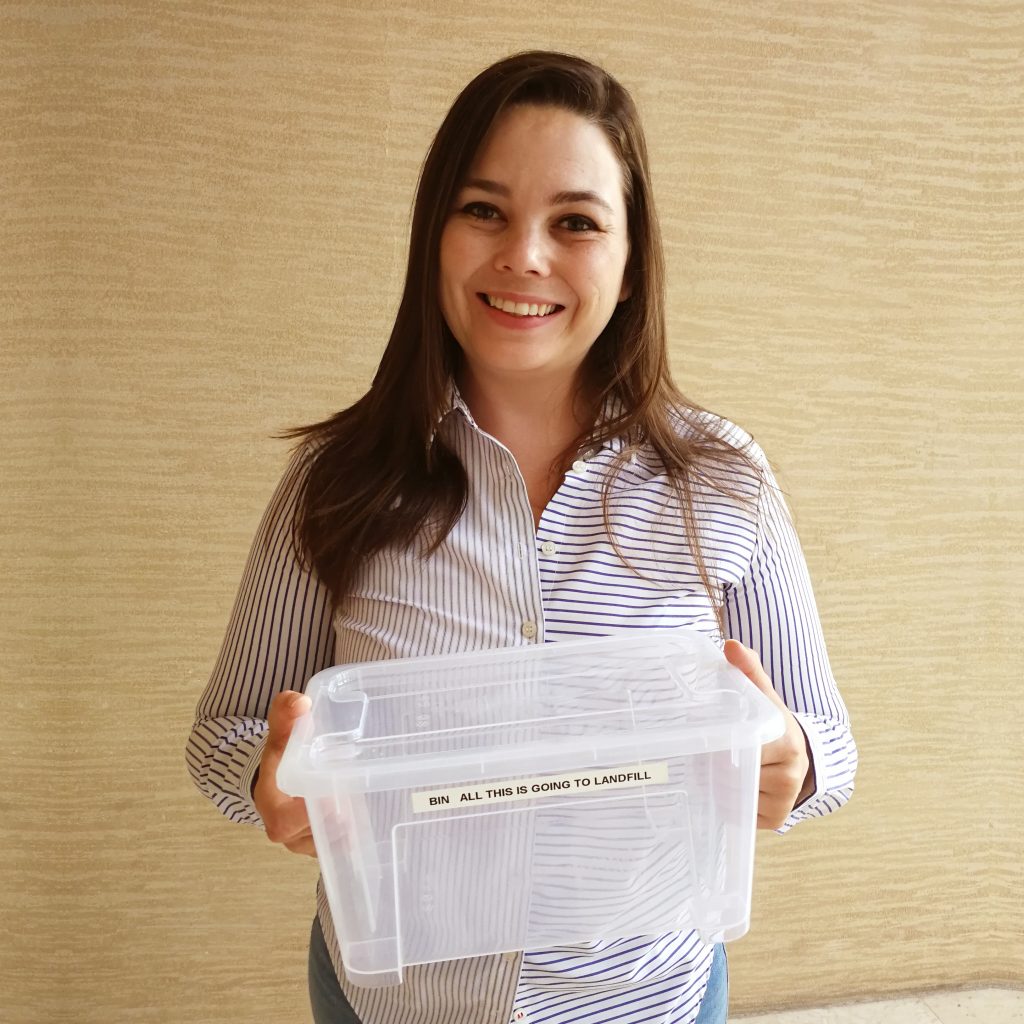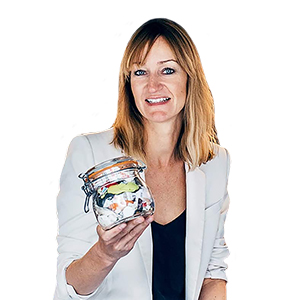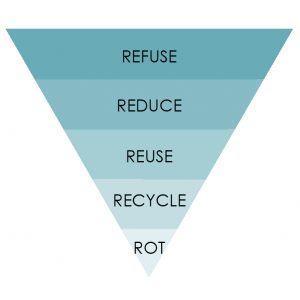What is Zero-Waste?

Have you ever heard the term zero-waste and wondered what exactly does that mean?
This is a question that I often get asked since starting my zero-waste journey. Zero-waste might not be the best description when it comes to describing my zero-waste lifestyle. Creating absolutely zero-waste is almost impossible to achieve. If this seems a little confusing to you don’t worry, I too was confused about this term as well when I started out.
The short and simple answer, zero-waste is a lifestyle where we aim to send nothing to a landfill.
The longer answer, zero-waste is to change our current linear economy system to that of a circular economy. The term zero-waste was first used in an industrial context in the 1970’s by an American chemist, Paul Palmer. In 1973 Palmer started Zero Waste Systems Inc. in California to reduce the amount of chemical waste in laboratories. His company was taking chemicals from companies that no longer required them and sold it to other companies that required these chemicals. Making sure the chemicals did not end up in a landfill or water streams.
Businesses can get zero-waste certified. There are also a few other certifications like closed-loop or circular economy certification where businesses take responsibility for their products design and management of materials by offering a take-back program for their products as well.
 In 2000’s the zero-waste lifestyle movement started by Bea Johnson (who we interviewed on the podcast) took this industrial term and used it to describe a lifestyle, but there is so much more to this lifestyle than just skipping the landfill. It is about breaking the habits of the linear economy lifestyle that we are living in. In a linear economy, scarce resources are used to create products and when they are no longer required, or seen as waste, they are thrown “away”. Such throw “away” items then end up in landfill, where they remain for decades or even centuries. As our industrial manufactured products typically do not decompose landfills keep growing, and even more space on the planet gets dedicated to “storing” the items that have been thrown “away”.
In 2000’s the zero-waste lifestyle movement started by Bea Johnson (who we interviewed on the podcast) took this industrial term and used it to describe a lifestyle, but there is so much more to this lifestyle than just skipping the landfill. It is about breaking the habits of the linear economy lifestyle that we are living in. In a linear economy, scarce resources are used to create products and when they are no longer required, or seen as waste, they are thrown “away”. Such throw “away” items then end up in landfill, where they remain for decades or even centuries. As our industrial manufactured products typically do not decompose landfills keep growing, and even more space on the planet gets dedicated to “storing” the items that have been thrown “away”.
Zero-waste is about changing our habits from a linear economy to that of a circular economy. A circular economy is where scarce resources are used to create products, and then used over and over and over again without throwing the items “away”, or sending them to a landfill. The items will remain in circulation. A zero-waste lifestyle is about using things over and over again.
It might seem like a lot of work at first to make sure your products stay in a circular economy, but there are many easy options available from supplying your unwanted items to second-hand stores or purchasing items from companies that offer a take-back program. Companies that offer a take-back program will design their product with the take-back program in mind. Every piece of the product is considered from the materials used, how the items are fixed together and if the items can be reused or fully recycled afterwards. There are companies that also offer a repair program, making sure your product lasts longer. Companies that offer a take-back program, can also repair the product and put it back in the market for a discounted rate or donate it for people in need. This way of doing makes sure the products stay in use for as long as possible. There are many examples of businesses that do offer a take-back program from reusable straw companies, clothing companies, furniture stores and many more.
Now that you know what a circular economy is, that people living a zero-waste lifestyle are trying to mimic it is also great to get a better understanding on what items you should bring into your life and what items to leave.
It might seem like you are overthinking things and in the beginning, it really felt like it as I had to question everything that I brought into my life, but this soon led me to save lots of money as I no longer participate in the linear economy with consumerism as its core, but rather invest my money into things I really needed, would make me happy and support a circular economy.
 I started following Bea Johnson’s five R’s (refuse, reduce, reuse, recycle and rot)
I started following Bea Johnson’s five R’s (refuse, reduce, reuse, recycle and rot)
Before I even think about taking something, buying something or bringing anything into our house, I asked myself if I really need it. If not, then the REFUSE is easy and I can politely say, no thanks I don’t need it and move on. But if there is something that I really need I’m not going to refuse it I’m going to move on to my second R which is reduced. I might not need four pairs of jeans just because it is on sale, but only one and therefore I am practising the next R and that is REDUCE. The thirds R is REUSE by reusing reusables, like remembering to bring and use your reusable bag when popping into the store. Using your reusable coffee mug rather than a single-use coffee cup or any other reusable that helps you to reduce using single-use items that get discarded afterwards.
The fourth R is RECYCLE, and it is number 4 for a reason. We focus so much on recycling that we often forget the first 3 R’s and in a lot of cases the waste could have been avoided. There are a lot of products that can be recycled without downgrading like aluminium. The same soda can you drank from today can be recycled and be back on the shelves in only a few weeks. Plastic, on the other hand, gets downgraded every time it gets recycled and therefore recycling should not be the first go-to option.
The fifth and final R is ROT (compost). Around 40% of our waste is food waste and the majority of that food could have been composted and the nutrients from the compost could go back into the soil. It is not only food that can be composted but things like your greasy pizza boxes as well. Not every single pizza box can be recycled, if your pizza box is really greasy it should not be recycled, but you can rather cut the box into smaller pieces and add to your compost. If your pizza box only has a few oily spots, then only cut out the oily bits for the compost and recycle the rest of the clean box.
There are many other items that can also be composted like your organic fibre clothing, bamboo toothbrush handle and even your hair or nail clippings. This has also changed the way I purchased clothing as I look out for organic materials instead. Opting for organic materials versus synthetic materials will not only make it easier to compost your organic clothing at the end of its life but will also help to not pollute the environment during the wear and tear over the years. Synthetic clothing releases microplastics in the water stream every time that it is washed.
I like to precycle before I purchase items and what that means is to basically have a look at where the product will end up at the end of its life. How do I recycle it? Can it even be recycled? Do I need to take to a special facility or can it be recycled through the kerbside recycling program? If it can not be recycled or reused afterwards and will just be sent to a landfill.
If we want to have a better circular economy, we need to look at things in our own lives. If something breaks to check if you cannot repair it first, before purchasing a new item. If you need to purchase an item, have a look at the second-hand market first, the item is already in circulation and you might get a better deal as well. Will you be using the items only that one time or many times after? If it is only required for a one-time job, check if you cannot borrow it from a neighbour or friend or hire one for the day. You can rent a better-quality product for a fraction of the cost of purchasing a cheaper model. If you are purchasing products look for quality products that are well-made and built to last. Maybe opt for reusable items rather than single-use items that may or may not be recyclable.
It all starts with the items that we bring into our lives and to think beyond our need at the moment, but also consider the entire loop and to make sure we support and invest in companies that are willing to close the loop and help with the change from a linear to a circular economy.

